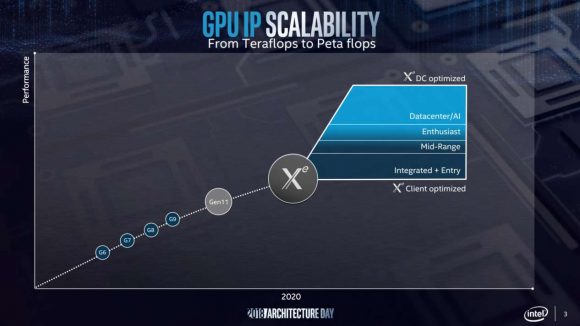Intel has clarified statements made regarding its Intel Xe graphics cards launching next year, and whether or not its maiden GPU will launch with ray tracing… kind of. A company spokesperson has said that any ‘confirmation’ recently announced by the company over in Tokyo was actually due to a dodgy translation from Japanese to English.
Over at an Intel developer conference in Tokyo, reports came flooding in claiming that Intel’s director of technology, Kenichiro Yasu, had confirmed ray tracing would feature on the company’s Intel Xe dGPUs. However, that’s turned out not to be the case.
In fact, Yasu never even touched upon the subject and was wrongly attributed due to poor translation from the source material posted by mynavi.jp, according to Intel’s statement (via ITHome). Now where have we heard that one before? Oh right. Intel’s Raja Koduri was also wrongly translated to and from Russian earlier this year, when it was reported that its discrete graphics cards would start out life at $200 and feature HBM2 memory. Unfortunately high bandwidth memory that cheap really was too good to be true.
But, rather confusingly, all hope is not lost for Intel and ray tracing. In the same breath, the company also reiterated that it will be offering ray tracing acceleration with its professional rendering platform on Intel Xe.
Whether the vast libraries and APIs it has built to support it will make it to the mainstream and into gaming rigs for yours truly remains unclear.
Graphics cards built to accelerate ray tracing, such as Nvidia’s RTX 20-series, feature dedicated silicon up for the task. However, this silicon is not required to offload ray tracing workloads onto a GPU, and ray tracing has been available in professional, non-gaming systems for some time. Intel, too, has been touting it for over a decade on Xeon CPUs.
As of today Intel only offers professional libraries for ray tracing – AMD is in a similar position – and dedicated silicon has not yet been integrated into its designs. That’s likely why the company is hoping to hamper expectations regarding ray tracing on Intel Xe.
There is another, pared back, option, however, one that is in its nascent stages today. Intel’s OneAPI rendering toolkit has been utilised by the World of Tanks devs to implement a hardware-agnostic, DX11 ray tracing solution. And if it’s already possible with today’s tech – a solid CPU and either an Nvidia or AMD GPU – then it will also be possible next year when Xe launches, too.

